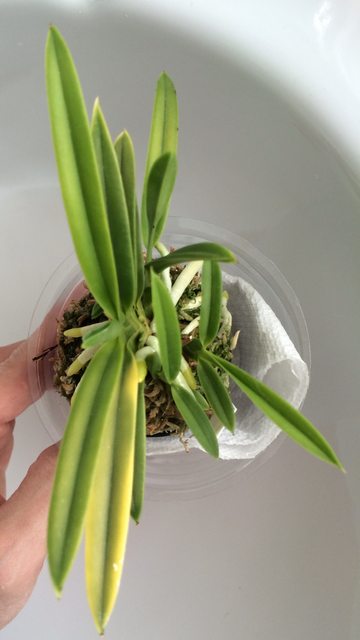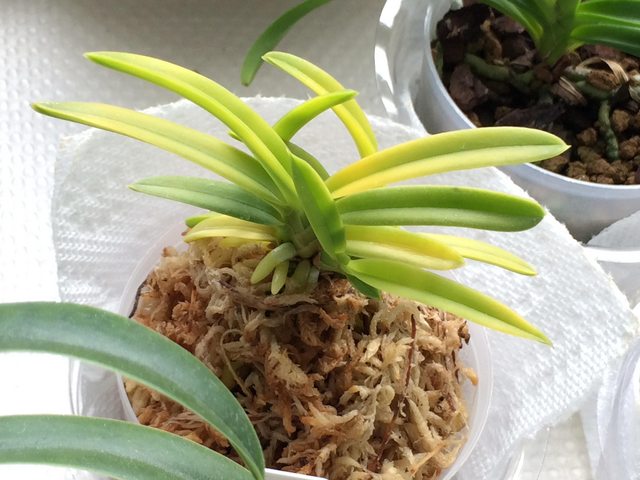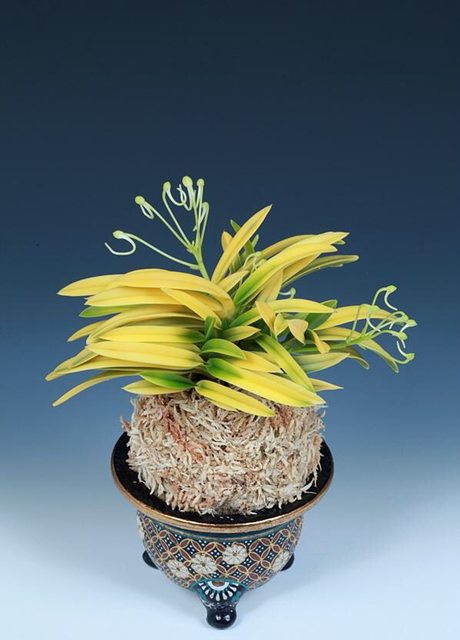Happypaphy7
Paphlover
Tiger varieties are my favorites, but since I have hard time getting the right color, I only have so many.
It seems like the little Kinyuko is not only a robust grower, but an easy "tanner"!
Just no flowers yet.
Everyone else has a spike at varying stages.
Kogane nishiki was all green back in March when I got it, but one random leaf started to show some yellow. I wish the whole plant was yellow like some fabulous specimen I see at exhibits. Oh, well...
Kinroukaku is a good tanner, but slower grower. I have one more of this same variety and under the same conditions, that one doesn't tan very well at all.
Kogane nishiki

Kinyuko

Kinroukaku

Gojo Fukurin
It has two spikes, but only one is developing normally, but only three buds it looks.

It seems like the little Kinyuko is not only a robust grower, but an easy "tanner"!
Just no flowers yet.
Everyone else has a spike at varying stages.
Kogane nishiki was all green back in March when I got it, but one random leaf started to show some yellow. I wish the whole plant was yellow like some fabulous specimen I see at exhibits. Oh, well...
Kinroukaku is a good tanner, but slower grower. I have one more of this same variety and under the same conditions, that one doesn't tan very well at all.
Kogane nishiki

Kinyuko

Kinroukaku

Gojo Fukurin
It has two spikes, but only one is developing normally, but only three buds it looks.




































